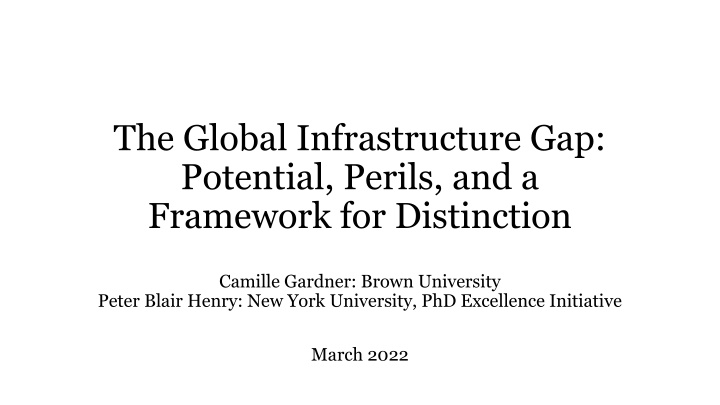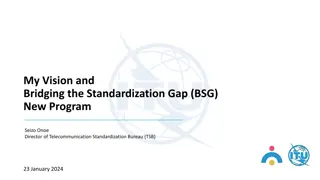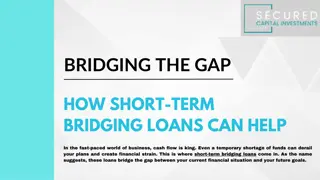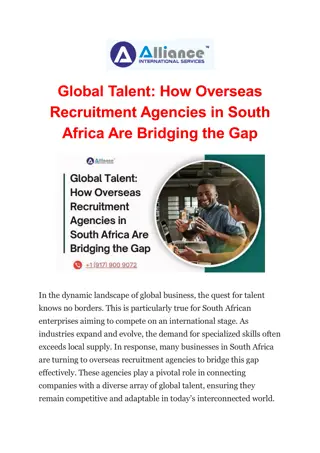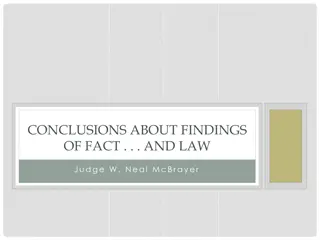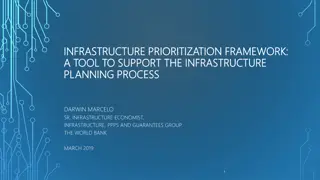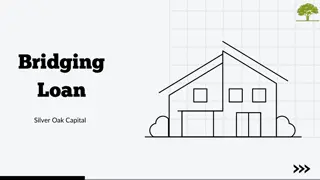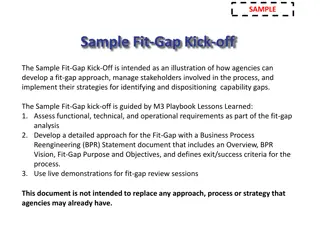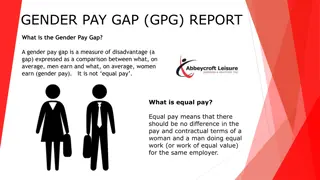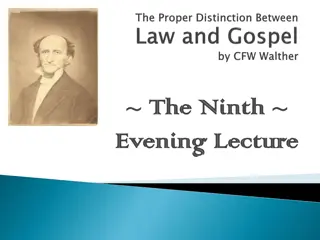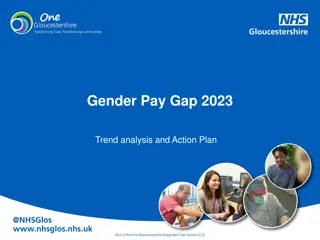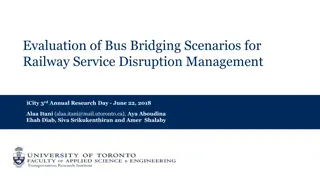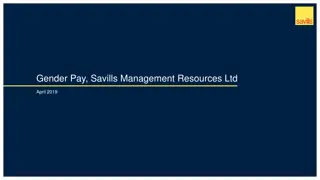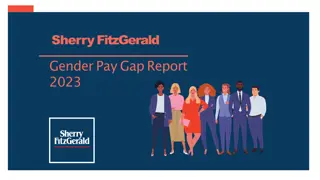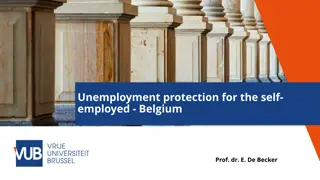Bridging the Global Infrastructure Gap: A Framework for Distinction
This paper introduces a Dual-Hurdle Framework to differentiate poor countries where the World Bank's claims on infrastructure investments are feasible from those where they are not. By assessing domestic efficiency and foreign profitability, the framework offers a practical approach to prioritize infrastructure projects and achieve sustainable development goals. Implementing this framework could help address critical infrastructure challenges in developing nations.
Download Presentation

Please find below an Image/Link to download the presentation.
The content on the website is provided AS IS for your information and personal use only. It may not be sold, licensed, or shared on other websites without obtaining consent from the author.If you encounter any issues during the download, it is possible that the publisher has removed the file from their server.
You are allowed to download the files provided on this website for personal or commercial use, subject to the condition that they are used lawfully. All files are the property of their respective owners.
The content on the website is provided AS IS for your information and personal use only. It may not be sold, licensed, or shared on other websites without obtaining consent from the author.
E N D
Presentation Transcript
The Global Infrastructure Gap: Potential, Perils, and a Framework for Distinction Camille Gardner: Brown University Peter Blair Henry: New York University, PhD Excellence Initiative March 2022
Fact 1 In poor countries, 1.2 billion people have no electricity and 1 billion live more than 2 kilometers from an all-weather road (Rozenberg and Fay 2019).
Fact 2 In April 2015, the World Bank claimed that by moving from billions to trillions in infrastructure investment in poor countries, rich-country private capital could: (i) close the infrastructure services gap, (ii) achieve the sustainable development goals, and (iii) make money.
This Paper: Introduces a simple equilibrium framework that distinguishes those poor countries in which the Bank s three-fold claim is tenable from those where it is not. The Dual-Hurdle Framework: (1) provides a practical tool for setting infrastructure priorities; (2) can be applied to projects within countries as readily as it can to cross-country analysis. Generating, validating, and making publicly available the data required to apply dual-hurdle analyses both within and across countries is a big opportunity for the Bank to do well and good.
?=?? ?? ?? ?=?? ?? ?? Where ??: rate of return on infrastructure ??: rate of return on domestic capital ?? : rate of return on foreign capital
?=?? ?? ?? ?=?? ?? ?? 1 Where ??: rate of return on infrastructure ??: rate of return on domestic capital ?? : rate of return on foreign capital
?=?? ?? ?? 1 ?=?? ?? 1 ?? Where ??: rate of return on infrastructure ??: rate of return on domestic capital ?? : rate of return on foreign capital
For a given poor country and type of infrastructure, the Dual-Hurdle Framework sorts each country-infrastructure observation into one of four quadrants according to whether it clears the hurdle for: (a) Domestic efficiency, and (b) Foreign profitability. ?=?? ?? ?? Quadrant I Clears both hurdles Quadrant IV Fails Domestic Clears Foreign 1 ?=?? ?? 1 ?? Quadrant III Fails both hurdles Quadrant II Clears Domestic Fails Foreign Where ??: rate of return on infrastructure ??: rate of return on domestic capital ?? : rate of return on foreign capital
Data Canning and Bennathan (2000): 53 poor countries; economic rates of return on paved roads, electricity generating capacity; rates of return on all capital. Same data for 16 rich countries. Caution: all data are from 1985. 26 poor countries have data on roads, 49 on electricity; Generate 75 country-infrastructure return observations, (?? ??,?? ??), and subject them to the Dual-Hurdle Framework.
In comparison with WB communiqu, joint prevalence of efficient + profitable opportunities was modest . 21 of 53 countries did not clear the dual hurdles for roads or electricity. Of the 32 countries with projects that cleared the dual hurdles, only 7 did so in both roads and electricity. The reality that in 1985 less than 1/7 of countries presented a data-driven case for publicly efficient and privately profitable investment raises questions about the wisdom of billions to trillions three decades later.
Prevalence and Magnitude of Quadrant I Opportunities: Roads vs. Electricity Of 75 observations, 39 (21 roads, 18 electricity), spread across 32 countries, sorted into Quadrant I. Of the 21 Quadrant I observations in roads, the mean (median) return was 10.2 (5.99) times larger than corresponding return on rich-country capital. Of the 18 Quadrant I observations in electricity, the mean (median) was 2.2 (1.87) times larger than corresponding return on rich-country capital.
Alternative order-of-magnitude comparisons The average excess-return multiple on poor-country roads in 1985 was roughly 7 times the excess-return multiple on portfolio equity in poor countries, which, once their stock markets were liberalized, presented an arbitrage opportunity large enough to fuel the rise of the emerging-market equity fund industry. Tradable claims on poor-country infrastructure are still limited, but the dual-hurdle analysis provides a framework for distinguishing countries where the creation of tradable claims might be beneficial from those where it would not.
Conclusion: Too much has happened since 1985 to draw distinctions based on information from that year, but the new analysis of old data in this paper: (a) provides a template that can readily be applied to updated data (cross- and within-country) on the economic rates of return on various types of infrastructure; and (b) demonstrates the utility (and urgency) of the World Bank collecting and disseminating that data as soon as possible.
